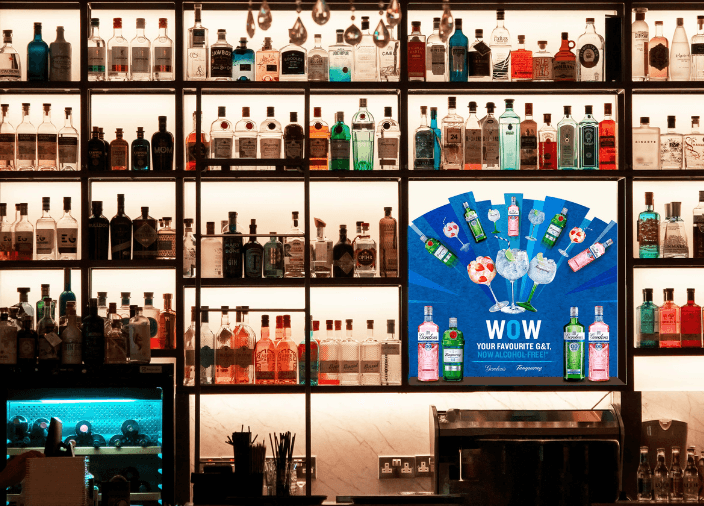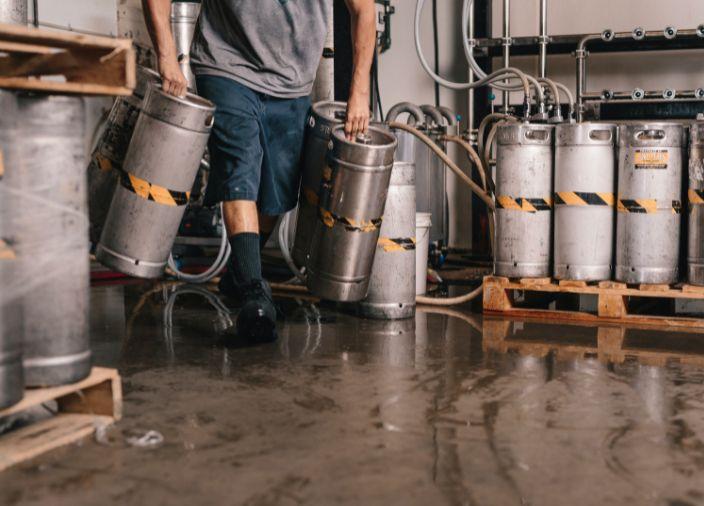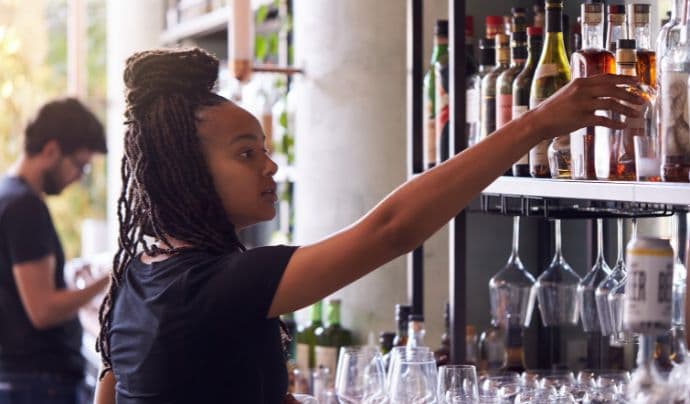A How-To Guide for Effective Range and Inventory in your Bar
Learn how to implement the right range of inventory for your bar for smooth operations, minimising waste, and fulfilling guest demand effectively.
Estimated reading time: 7 minutes
In a bar, the term "range of products" typically refers to the variety and diversity of alcoholic and non-alcoholic beverages, as well as related items. It encompasses the different types of drinks, brands, flavours and styles available for purchase. Planning the right range of inventory for your bar is essential to ensure smooth operations, minimise waste, and meet customer demand effectively.
The range of products in a bar can vary based on the type of bar, its theme, and its target audience. It plays a significant role in attracting customers, meeting their preferences and creating a specific atmosphere within the bar. However most importantly, a well-managed range of products and inventory will impact the bar's profitability.
A key reason for the underperformance of many bars is a lack of strategy when purchasing, leading to:
- Carrying too many product lines
- Too much money tied up in inventory
- Unsustainable levels of variance (loss of inventory)
OPTIMISE YOUR PORTFOLIO RANGE
When it comes to planning for your bar’s product range, usually less is more. Ensure that your portfolio is aligned with your venue’s target audience and volume of business. Too big a range can be overwhelming for customers and hold up valuable capital and reduce efficiency.
‘Horizontal’ and ‘Vertical’ Range
One approach is to use a common inventory management system used in the retail industry looking at the ‘Horizontal’ and ‘Vertical’ range of products.
The horizontal range refers to the variety of products within a particular category or product type. For example, having a wide range of different types of spirits (vodka, rum, gin, tequila, whisky, etc.), beers (lagers, ales, stouts), and wines (red, white, sparkling) would represent a strong horizontal range of products. This approach aims to cater to various customer preferences within each beverage category but will likely incur a high holding cost.
The vertical range refers to offering products at different price points and quality levels within a specific category. For example, offering premium brands alongside deluxe or entry-level options. This strategy accommodates customers with different budgets and preferences for quality.
Setting Up Your Product Portfolio
To start, consider what is the identity of your bar and what kind of experience you are trying to offer to your customers? This will then impact what considerations you will have when selecting your product range which may include:
- Origin of product (local or imported?)
- Brands (with history and heritage? or new and exciting?)
- Quality
- Price
- Category (gin or cognac?)
- Innovation or classics?
Drop the products you have in mind into these categories:
- Must-Stock: Standard spirits used when customers do not call-out specific brands, these do not need to be visible in the backbar.
- Core - Best-selling premium spirits that offer a better drinking experience and should make up most of your portfolio.
- Excite - Innovative, seasonal, or super premium spirits for celebrations.
Now re-examine if the current range of products in these categories are delivering your brand to customers and based on this try to ‘right-size’ your range. Combining this with the BCG Matrix and data from your POS system will help you start reducing your range and step towards aligning your portfolio with your brand. Remember, the goal is to create a balanced menu that provides value across different price points.
Work with Your Supplier
Find common ground with your supplier/s and identify what goals you both share. The obvious shared purposes would be to increase sales and better represent the products in your menu. As such, work on activities that mutually beneficial e.g., seasonal promotions, educating consumers on specific products, spotlighting drinks featuring certain brands etc.
Sticking to the Lineup
Once you have optimised your portfolio, the ‘horizontal’ range is settled. Document it and review it at planned intervals or as required (because trends will change). In the interim, always endeavour to maintain your portfolio at the right size. When considering introducing a new gin, think about which item it will replace on your current menu.
NEW PRODUCT IN = OLD PRODUCT OUT!

MANAGING INVENTORY
Managing inventory (how much of each item to stock) is crucial to ensure the smooth running of the business. It prevents stockouts, saves storage space and avoids over-ordering which leads to spoilage and waste.
Bar managers will need to consider some of the following to make informed decisions about inventory levels:
- Shelf life and storage conditions
- Delivery lead time
- Popularity of item
- Business forecast
- Volume discounts
Plan any purchases by examining usage and stock to make sure you are ordering the correct items and right quantities.
The Problems with Overstocking & Understocking
When your bar inventory is too high, it means that your turnover is low. Inventory turnover shows how many times you sell and replace bar stock. If that number is too low, it means that you are holding on to inventory for extended periods of time. Not an immediate issue with spirits but it could be a problem for items with a shorter shelf life like wines or beers (especially draught beers). Overstocking also ties up working capital (cash), increases storage costs and risks wastage (due to spoilage) or loss (theft). This will have an impact on your bottom line.
Conversely with under stocking, the risk is not having a product when a customer orders. This would lead to missed sales and reduce customer satisfaction (especially if it’s a popular item). Additionally, you may not be enjoying cost efficiencies gained by meeting minimum orders (or volume discounts) and face the risk of not being able to restock if there is ever a shortage.

Turnover Inventory
The ideal amount of inventory in bar will depend on the specific product, for example perishable items, such as fresh fruits, will need to be ordered more often to ensure freshness, while spirits can be purchased less frequently to avoid understocking and take advantage of volume discounts.
To calculate inventory turnover, use the below formula:
*COGS = Start Inventory + Purchases – End Inventory
** This is the average of the beginning and ending inventory values.
Example:
If the bar purchases $50,000 of goods a month and has an average of $10,000 of on-hand inventory, then the turnover is $50,000 ÷ S10,000 = 5.
A high Inventory Turnover Ratio usually indicates that the business is efficiently managing its inventory, selling products quickly, and replenishing stock frequently. A lower Inventory Turnover Ratio suggests that inventory might not be moving as quickly and the business might be carrying excess inventory.

Holding Cost
Holding cost refers to the cost of the stock that is held in the bar at any given time and is part of the overall costs associated with running a bar, which include expenses like storage and spoilage. Due to its relatively high price, alcoholic beverages will make up most of the holding costs in a bar.
Generally, holding costs are expected to be a fraction of the total revenue to ensure that the business remains profitable. While there is no universally fixed percentage that applies to all bars, the industry norm ranges between 20% and 30% depending on some of the factors below:
- Type of Bar: High-end cocktail bars will tend to have a higher holding cost as opposed to a neighbourhood pub due to the cost of liquors that are offered in the premise.
- Size of Bar: Larger bars with more storage area can have a higher holding cost and benefit from economies of scale.
- Volume of business: Bars with high demand can have a higher holding cost.
- Efficient Inventory Management: This will lower holding costs.
Key Takeaways
- A good range of products, effective inventory management, and low inventory turnover are all essential factors in running a successful and profitable bar.
- Each of these elements plays a unique role in enhancing customer experience, optimising operations and maximising financial outcomes.
- While the circumstances of each bar will differ, the principles apply throughout and it’s important to regularly monitor and analyse performance metrics; adapting strategies accordingly to remain competitive.
Empower your team to keep up with industry trends, learn from the experts and discover invaluable resources for their bar career by encouraging them to sign up to the Diageo Bar Academy for free.
